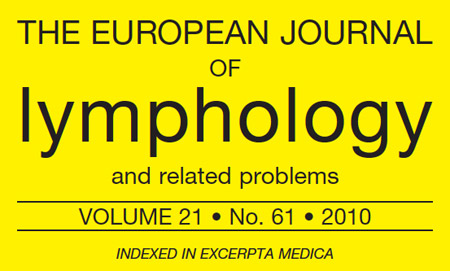OVERVIEW
BELGRADO J.P.*, BRACALE P.*, BATES J.*, RÖH N.**, ROSIELLO R.**, CANGIANO A.***,
MORAINE J.J.*
*** FSM – Université Libre de Bruxelles – Belgium
*** European Medical Center – Bruxelles – Belgium
*** Centro Serapide – Napoli – Italy
Corresponding author: JP Belgrado, PT Dhrs
Université Libre de Bruxelles
Faculté des Sciences de la Motricité
CP 640 Campus Erasme
808, route de Lennik
1070 Bruxelles
Belgium
e-mail Amoxil online belgrado@ulb.ac.be
THE EUROPEAN JOURNAL OF LYMPHOLOGY – Vol. XXI – Nr. 61 – 2010
1. INTRODUCTION
The evolution of lymphoedema during physical treatment appears
quite easy to measure, especially if we limit ourselves to
considering the decrease in its volume, and furthermore if we limit
the volume’s measurement to the geometry of the arms, forearms,
legs and thighs to a cylinder (lymphoedema reside mostly in these
anatomical segments). On the other hand if we want to observe
more complex anatomical areas such as the breast or scrotum, and
especially when we take into account other parameters that are
equally as interesting, such as the quality of the skin, it’s water
density, the thickness of the dermis etc., the task of remaining
precise becomes much more complex.
With regard to the measurement of the shape of the oedema, a
series of pictures taken in standardized conditions (which are
explained in detail below), can suffice for the analysis of the
treatment’s results and the control of its efficiency. But how can
we deal with more complicated geometries like the root of the
limb, hands, feet, the face, breasts, external genitalia…and again
other parameters that are less visible to the naked eye such as the
thickness of the dermis, the variation of the subcutaneous tissue,
the skin’s temperature, the quality of the skin, the tonicity of the
oedema, the joint’s function, the quality of life, etc. All of them
are measurable and important in the evaluation of the treatment’s
efficacy. Regular measuring in the daily practice represents an
important part in the assessment of the oedema’s evolution, and
the more parameters the therapist can avail of, the better equipped
they will be to adapt the treatment to each patient’s specificities.
Another interesting application of the knowledge that can be
obtained from measuring the affected area is the predictive factor
or early indicator: detecting slight changes that are invisible to the
THE EUROPEAN JOURNAL
OF lymphology
and related problems
VOLUME 21 • No. 61 • 2010
INDEXED IN EXCERPTA MEDICA

